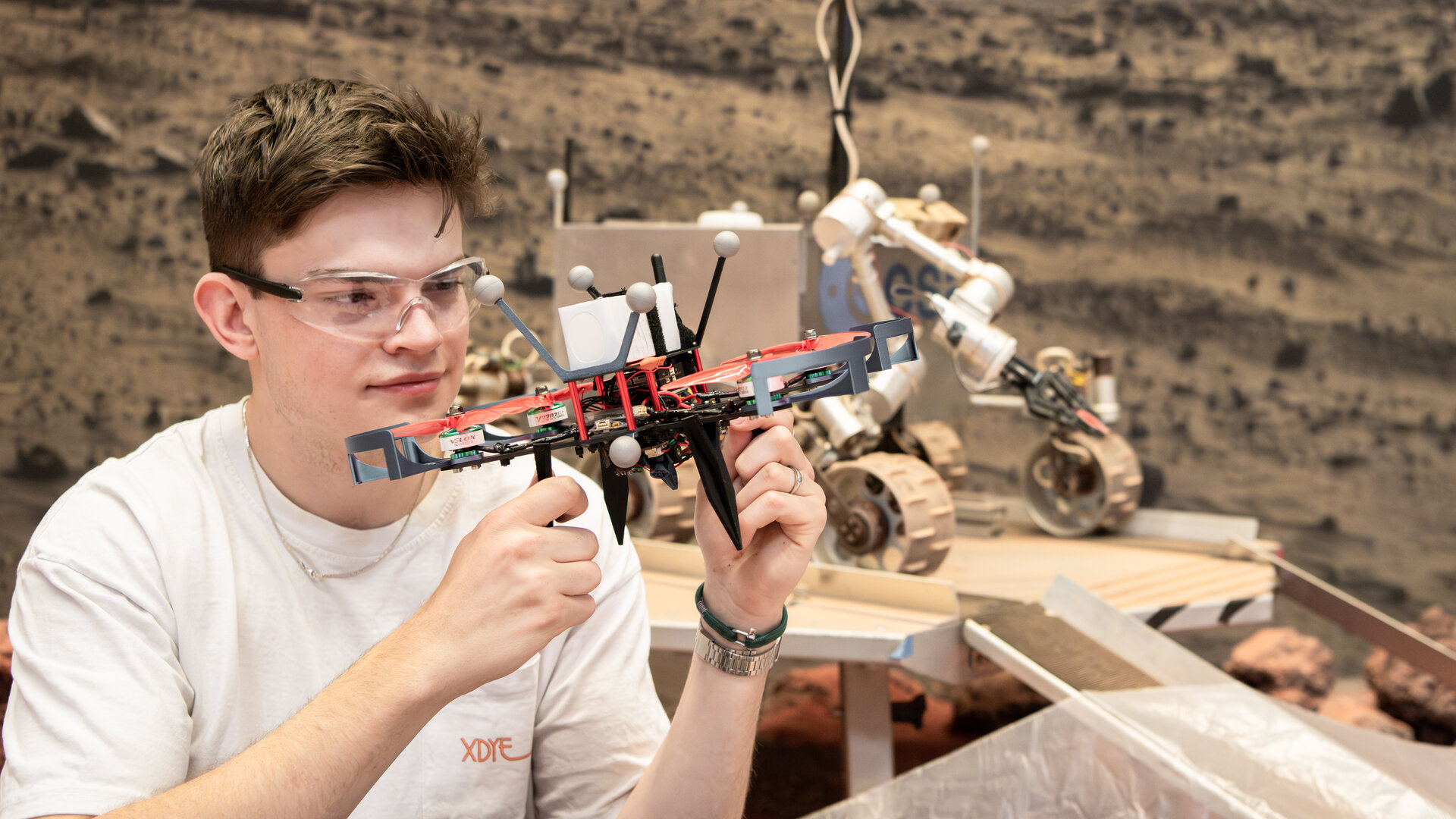Key Takeaways
- A tethered drone can enhance terrain navigation for Mars rovers by providing better visibility and data sharing.
- The innovative approach combines tether localization with inertial odometry to improve the drone’s position accuracy.
- This research suggests that tethered drone systems could play a significant role in future planetary exploration missions.
Overview of the Research
Navigating the challenging Martian terrain poses considerable difficulties for rovers and drones alike. Traditional rovers utilize a camera-equipped mast to navigate but face issues with vibration on uneven surfaces, resulting in blurry images and limited speed. To overcome this, engineers propose integrating drones that could fly above the rovers, thus providing a clearer view and facilitating faster movement.
The drone would also assist in keeping the rover’s solar panels dust-free through airflow generated by its propellers. However, autonomous navigation remains a challenge for flying drones in vast, featureless landscapes, a problem that hindered NASA’s Ingenuity Mars Helicopter.
Dielof van Loon, a student at Delft University of Technology, explored a novel solution during his internship at the European Space Agency’s Planetary Robotics Laboratory. He investigated tether localization—where a physical tether links the drone to the rover—to enhance the drone’s positioning capabilities.
By combining tether localization with inertial odometry, which determines the drone’s position and orientation similarly to smartphone orientation, Dielof aimed for more reliable navigation. His project involved a drone tethered to a rover simulation platform, allowing the analysis of the tether’s unwound length and angles during various flight patterns, such as a figure-eight maneuver.
Dielof designed a system to measure the tether’s angles at both the drone’s attachment point and the platform’s entry point. By integrating sensor data on tether tension and length, a base station computer computes the precise position of the drone throughout its flight.
The developed setup signifies that, in future missions, the tether could extend beyond current limitations and even accommodate dual-drone systems—one tethered and another free-flying.
Lennart Puck, Dielof’s internship supervisor at ESA’s Planetary Robotics Lab, commended the project for demonstrating the viability of tethered drones in planetary exploration. The research showcases the potential of such systems as reliable extensions for surface vehicles, merging mobility with enhanced localization capabilities.
Dielof’s work thus paves the way for future exploration concepts that could significantly improve the coordination and functionality of rovers and drones on Mars and beyond.
The content above is a summary. For more details, see the source article.















